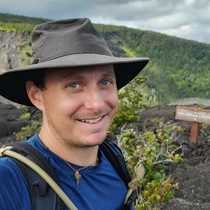There was plenty of activities in store for the guests on National Geographic Quest even though it was the last day of the trip. We had already explored orchards, hiked through tunnels, kayaked on rivers and rode jet boats up rapids. Now it was our chance to travel through time in a place that was pivotal in the development of the modern-day West Coast of the United States.
Astoria, Oregon was the first European settlement on the West Coast, it is where Lewis and Clark reached the turn-around point of their quest, and it is the entrance to the Columbia River and the most inland port in the western United States. With all of this to offer, it is no wonder the day was jam-packed.
Half of the day was spent exploring Cape Disappointment on the Washington coast. This is home to the Lewis and Clark Interpretive Center and Fort Canby. The Center follows the Corp of Discovery on their journey to the Pacific and back. It has a lot to offer with stories, replicas, and actual artifacts. The Center is built on top of old Fort Canby. This fort was in operation with the U.S. Army as an artillery outpost from 1864 until 1947. The guns and supplies have been removed but the barracks and gun decks remain.
The other half day excursion was a trip to Fort Clatsop and the Columbia River Maritime Museum. Fort Clatsop was the winter home to the Corp of Discovery in 1805/1806. They spent a wet, dreary, miserable winter here before they turned around and headed back to civilization. A life-size recreation of the fort offers visitors a chance to feel a little bit of the day to day life of the soldiers as they waited for weather nice enough to travel in.
The Columbia River Maritime Museum pays tribute to the ocean-going roots of the Astoria community. A large portion is dedicated the brave men and women of the U.S. Coast Guard that risk their lives to save sailors in distress at the Columbia River Bar. “The Bar” as it is known, is some of the most dangerous water in the Pacific. The Columbia River has no delta and flows straight into the oncoming waves. In the last 200 years, more than 2,000 ships have been lost to this treacherous stretch of ocean.
At the end of an eventful day, everyone re-boarded the ship for







